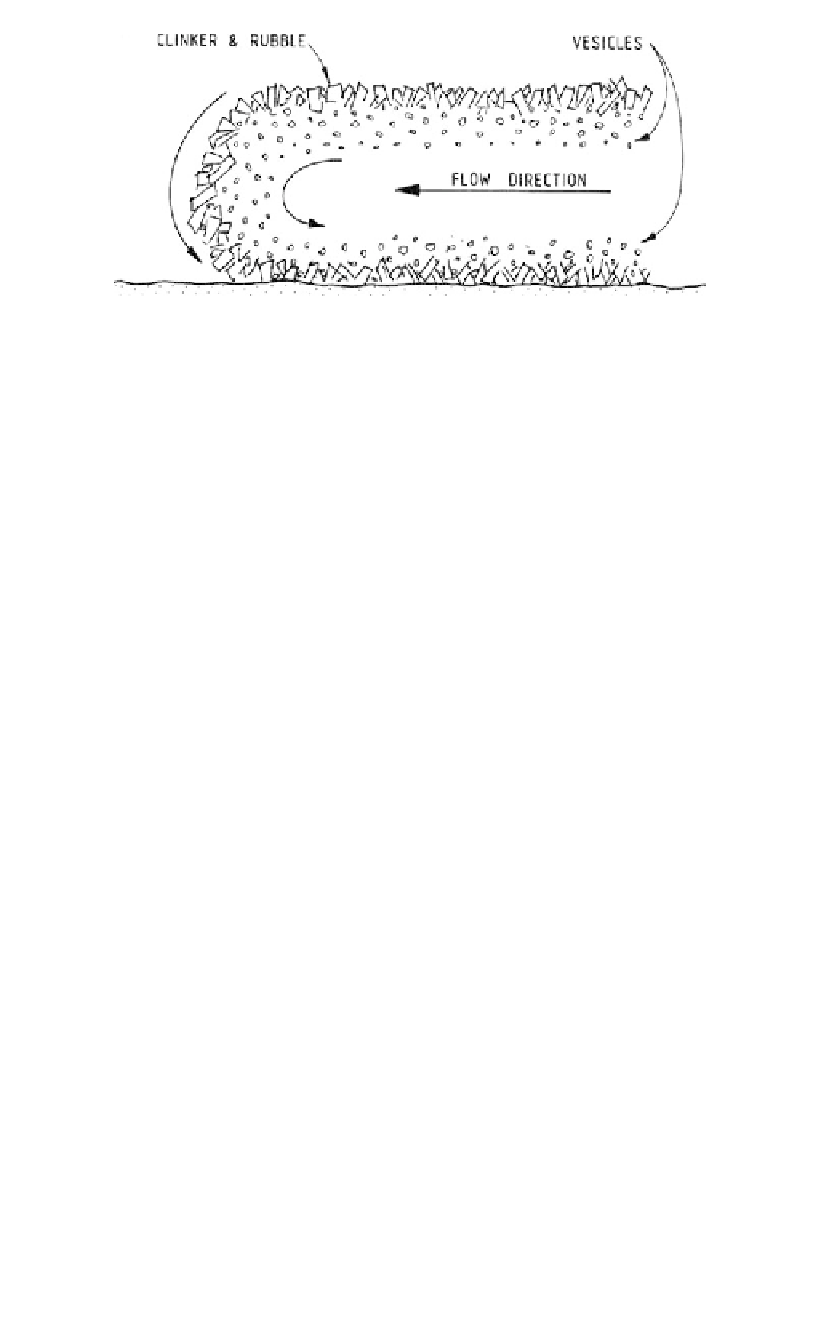Environmental Engineering Reference
In-Depth Information
Figure 3.3.
Diagrammatic longitudinal section through flowing lava showing the “caterpillar track” mech-
anism which results in upper and lower layers of vesicular lava and in some cases clinker or
breccia.
3.2.2
Flows
Lava “flows” are bodies which have been formed by molten lava which has been extruded
at the ground surface or the sea floor and has flowed over a pre-existing surface of rock,
soil or sediment.
3.2.2.1
Flows on land
Structures developed in lava flows on land are described in some detail in Hess and
Poldervaart (1967), Francis (1976) and Bell (1983b). The flows move forward in a manner
similar to that of a caterpillar tractor, as shown in Figure 3.3. The lava near the exposed,
upper surface of the flow usually develops many small holes or vesicules, formed by bub-
bles of expanding gases becoming trapped as the magma solidifies. The upper surfaces of
some flows develop an extremely rough, fragmented structure, comprising sharp, irregu-
lar fragments up to 150 mm across, termed clinker. Bell reports that clinker layers several
million years old and buried at 500 m to 1000 m depths in Hawaii show little or no sign of
compaction and are highly permeable. As the flow (Figure 3.3) moves forward the clinker-
covered surface and vesicular layer are carried forward, deposited over the front and eventu-
ally buried beneath the flow. Thus the solidified flow comprises an inner layer of massive rock
sandwiched between two layers of clinker and vesicular rock which are highly permeable.
Other lava flows develop a hummocky and sometimes twisted ropy structure at their
upper surfaces, due to viscous drag on the surface crust while this is still plastic.
Where successive lava flows have occurred to form a continuous layered sequence, the
individual flows and their boundaries may be distinguishable by the following:
- The development of a weathered or soil profile on the upper surface of a flow which
was exposed to weathering for some time before the next flow occurred;
- The presence of chilled and vesicular zones, or clinkered, brecciated or ropy zones near
flow boundaries.
At Foz do Areia dam in Brazil, breccia (clinker) zones at the boundaries of basalt flows
were locally weathered and generally highly permeable (
Figure 3.4
)
. Treatment of these
zones by excavation, dental concrete and grouting is described by Pinto et al. (1985).
It is common for lava flows to be interbedded with pyroclastic materials (ash and lava
fragments) or tuff and agglomerate in rock sequences derived from volcanic explosions.
Also flows may occur interbedded with alluvial or other sediments.

